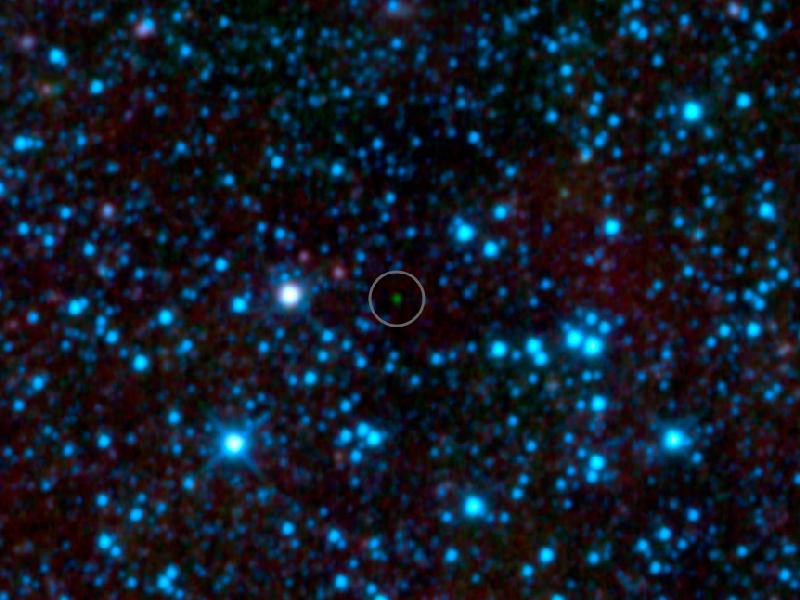The coldest stars in the universe

WISE 1828+2650, the coldest brown dwarf known so far, is denoted by a green
dot in very center of this infrared image.
Credit: NASA/JPL
dot in very center of this infrared image.
Credit: NASA/JPL
When we think of a star, we usually imagine a nuclear-powered furnace of hot plasma, flowing and churning violently under the dual influences of convection and twisted magnetic field lines. But many stars are so small and dim that they don’t burn at all – they are not massive enough to start nuclear fusion in their cores. These stars are called Brown Dwarfs, and usually glow with a temperature of a few hundred degrees. Recently, the first examples of class Y brown dwarfs were discovered, which have the lowest temperatures yet seen on the surface of a star. These stars have a comfortable surface temperature of about 25° Celsius – just right for a glass of red wine.
It turns out that Brown Dwarfs are everywhere, and this is only a surprise because we’ve never been able to see them before. After all, even the hotter examples are barely hot enough to shine in visible light at all, making them extremely faint. The class Y dwarfs do not emit any visible light, so can only be seen by infrared telescopes which need to be up in orbit if they are to work well at all. Infra-red light is quite efficiently blocked by water vapour, and there is a lot of that in Earth’s atmosphere. This is why there is so much focus on getting infrared telescopes above the atmosphere, with projects like SOFIA, the James Webb Telescope and WISE. This first discovery of Class Y dwarfs was done using WISE, which continues to do valuable work in retirement; the spacecraft’s original six month mission ended in June 2010 when its coolant ran out leaving the more sensitive receivers inoperable. Even in its reduced capacity, it remains one of the most powerful instruments we have for finding small faint objects.
For more information about the discovery, read the official press release.
